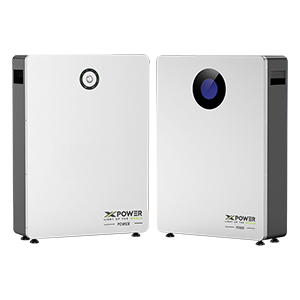Una guía completa sobre sistemas de montaje de paneles solares en cubiertas planas
Time of Release : 2024-10-12
Acerca del autor:
¡Bienvenidos! Es un honor para mí presentarles nuestra marca: Xpoder, el autor de esta guía sencilla sobre tecnologías de células solares. Con más de 15 años de experiencia en la industria solar fotovoltaica (PV), Xpower aporta una gran cantidad de conocimientos y experiencia.
Xpower, como fabricante y exportador en el campo de la energía solar, a través de años de experiencia práctica, hemos sido testigos de la evolución de las tecnologías de células solares y el impacto transformador que han tenido en el panorama de las energías renovables.

As the demand for renewable energy continues to grow, solar power has emerged as a leading solution for both residential and commercial buildings. Flat roofs, often found on industrial and commercial structures, present unique opportunities for solar panel installations. Choosing the right solar mounting system is crucial for optimizing performance and ensuring the longevity of your solar investment. In this article, we’ll explore the different types of flat roof solar mounting systems available, highlighting their benefits and considerations.
1. Ballasted Mounting Systems
Ballasted mounting systems are an excellent choice for flat roofs, utilizing weights to secure solar panels without penetrating the roofing material. This approach minimizes the risk of leaks and helps maintain the integrity of the roof.
Benefits:
No Roof Penetration: By avoiding penetrations, these systems reduce the likelihood of leaks and typically do not void the roof warranty.
Quick Installation: Without the need for drilling, installation can be completed more efficiently.
Flexibility: Ballasted systems can be easily adjusted or relocated if necessary.
Considerations:
Requires adequate structural support to handle the added weight of the ballast.
May not be suitable for roofs in areas prone to high winds.
2. Penetrating Mounting Systems
Penetrating mounting systems involve attaching solar panels directly to the roof structure using brackets that penetrate the roofing material. This method provides a robust solution for securing solar arrays.
Benefits:
Stability: These systems offer enhanced stability in windy conditions, making them ideal for various climates.
Lower Profile: A more streamlined design reduces wind resistance, which can be advantageous in certain environments.
Considerations:
Proper installation is critical to prevent leaks and potential damage to roofing materials.
There may be a risk of voiding the roof warranty due to penetrations.
3. Hybrid Mounting Systems
Hybrid mounting systems combine elements of both ballasted and penetrating solutions, providing a balanced approach to solar panel installation.
Benefits:
Versatility: Suitable for different roof types and conditions, hybrid systems offer flexibility in installation.
Enhanced Stability: By incorporating both securing methods, these systems provide increased stability in challenging environments.
Considerations:
The complexity of installation may require professional assessment and planning.
Higher costs may be associated with the combination of materials used.
4. Tilted Mounting Systems
Tilted mounting systems elevate solar panels at an angle, optimizing sunlight exposure and improving energy production.
Benefits:
Increased Efficiency: Panels set at an angle capture more sunlight, particularly beneficial in regions with low sun angles.
Improved Airflow: Enhanced ventilation can help cool the panels, potentially increasing efficiency and lifespan.
Considerations:
Structural assessments are necessary to ensure the roof can support the additional height and weight.
Increased exposure to the elements may require more maintenance.
5. Rail-less Mounting Systems
Rail-less mounting systems eliminate the need for traditional rails, allowing solar panels to be mounted directly onto the roof using innovative brackets.
Benefits:
Reduced Material Use: Fewer components lead to lower costs and reduced environmental impact.
Streamlined Installation: The simplified design can save time and labor during installation.
Considerations:
Requires careful planning to ensure proper alignment and stability.
Not all roof types may be compatible with rail-less designs.
6. Integrated Mounting Systems
Integrated mounting systems are designed to seamlessly blend with the roof structure, often utilizing specialized roofing materials.
Benefits:
Aesthetics: These systems offer a clean, streamlined appearance, enhancing the overall look of the building.
Efficiency: Integrated designs can improve the performance of both the roof and solar panels.
Considerations:
Higher initial costs may be associated with specialized materials and design requirements.
Attention to detail during the design phase is essential for optimal performance.
Conclusión
Selecting the right flat roof solar mounting system is vital for maximizing the efficiency and longevity of your solar installation. Each type of mounting system—whether ballasted, penetrating, hybrid, tilted, rail-less, or integrated—has its unique advantages and considerations. It’s essential to assess your specific needs, roof characteristics, and local weather conditions when making a decision.
Consulting with solar professionals can provide valuable insights and help ensure that you choose the best mounting system for your project. With the right approach, flat roof solar installations can contribute significantly to sustainable energy goals while providing long-term savings on energy costs.





